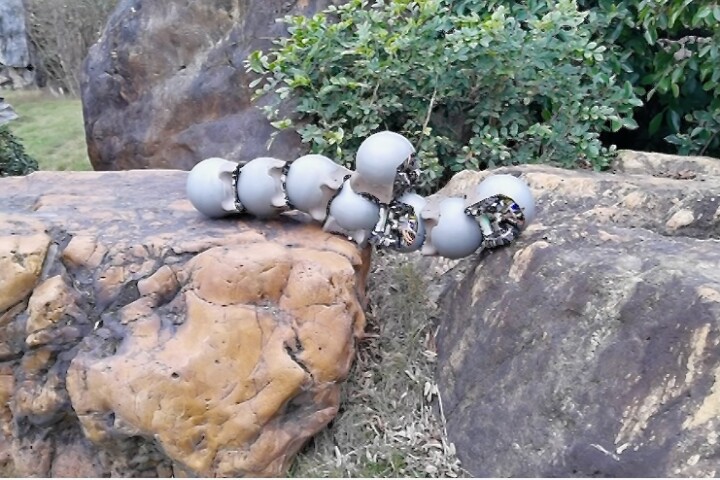Moving into a new neighborhood means finding a place to live, and 45 years after Neil Armstrong set foot on the Moon, our largest satellite is still notoriously short on housing. However, that may be changing as NASA announces that its Lunar Reconnaissance Orbiter (LRO) has discovered over 200 deep pits on the Moon that could not only provide scientists with deeper insights into the geology of the Moon, but could also be used as sites for future Lunar outposts.
When it comes to harsh living conditions, the Moon gets top marks. There’s hard vacuum instead of an atmosphere, the temperature swings hundreds of degrees between freezing and boiling during the course of every month-long "day," the surface is blasted with cosmic and UV radiation, micrometeorites rain down to puncture spacesuits and damage equipment, and the infamously clingy and abrasive lunar dust is everywhere.
To escape these problems, many scenarios for building outposts on the Moon involve bulldozing lunar soil to cover the habitat to act as insulation and a radiation shield. If NASA’s lunar pits are real, they might be a possible alternative in the form of ready-made caves where habitats could be installed away from the worst of the surface conditions.

The Moon pits
Launched in 2009, the LRO was placed in a lunar polar orbit as part of its mission to make a detailed survey of the lunar surface using a suite of six instruments; one of which is the Narrow Angle Camera (NAC) that is used to take high-resolution images of the lunar surface. Using a new computer algorithm developed by Robert Wagner of Arizona State University, NASA was able to identify over 200 pits, which is considerably more than the first three found by the Japanese SELENE (aka as Kaguya) spacecraft between September 2007 and June 2010.The pits range is size from about 5 m (15 ft) to 900 m (3000 ft) in diameter and vary in shape from punch-like circles to elliptical gouges. What all have in common is that, unlike typical lunar craters, the pits consist of steep-walled shafts with deep shadows indicating that they may open into caverns beneath. If so, they could make the job of colonizing the Moon a bit easier.
"Pits would be useful in a support role for human activity on the lunar surface," says Wagner, who is lead author of a paper detailing the research. "A habitat placed in a pit – ideally several dozen meters back under an overhang – would provide a very safe location for astronauts: no radiation, no micrometeorites, possibly very little dust, and no wild day-night temperature swings."
According to NASA, most of the pits are very young, being "only" under a billion years old, though a few have been seen in the ancient lunar highlands and may be older.
"Impact melt ponds of Copernican craters are some of the younger terrains on the Moon, and while the maria are much older at around three billion years old, they are still younger and less battered than the highlands," Wagner says. "It's possible that there's a 'sweet spot' age for pits, where enough impacts have occurred to create a lot of pits, but not enough to destroy them."

How the pits formed
The pits formed in either the beds of larger craters that were once molten ponds from the meteor impacts that formed them, or in the lunar maria; the large, dark areas of the Moon that were once giant seas of lava. As the crater walls slumped down, it forced the lava in the crater to flow underneath. In both the craters and the maria, the processes formed cave-like lava tubes over hundreds of thousands of years as the molten rock drained away – similar to those found on Earth in places like Hawaii. On the Moon, these tubes sometimes collapse, creating formations like dry riverbeds called rills. The pits are formed by a similar collapse due to disturbances such as meteor impacts. Only in the case of the pits, just one part of the tube falls in, producing the shaft.
If astronauts or probes can one day visit these pits, they would provide a valuable insight into the history of the Moon. Obviously, it would allow scientists to learn more about how the pits were formed. Wagner says that it could also provide insights into the history of the maria. Already the pit images from the LRO indicate that the maria were built up in layers caused by repeated lava flows inside of a single massive flood.
The Future
NASA says that the LRO has only imaged about 40 percent of the lunar surface, so there are very likely over a hundred more pits to be discovered, as well as many more small ones too small to be seen from orbit."We'll continue scanning NAC images for pits as they come down from the spacecraft, but for about 25 percent of the Moon's surface area (near the poles) the Sun never rises high enough for our algorithm to work," says Wagner. "These areas will require an improved search algorithm, and even that may not work at very high latitudes, where even a human has trouble telling a pit from an impact crater."
Eventually, NASA hopes to send probes into the pits to learn more about them and any possible caverns with the first targets being the largest pits in the lunar maria.
The teams findings were published in Icarus and the video below takes a look at the lunar pits.
Source: NASA







